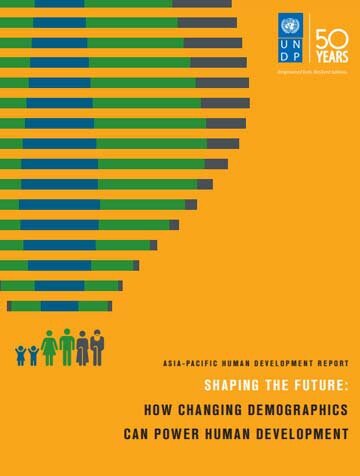UNDP in the Asia and the Pacific region has 24 Country Offices and works regionally from Bangkok and Suva. Our work covers 36 countries and territories. From the world's most populous nation to the smallest island territory, we draw inspiration from the resilience of the people in the region. We honour the long-term commitment to work with people and their governments to find solutions that work for each country and each community, to design sustainable development interventions, and to foster lasting recovery from disasters or armed conflict
UNDP works to support countries in the Asia and the Pacific region to achieve their national development goals and human development objectives within the four main focus areas: Poverty Reduction, Democratic Governance, Crisis Prevention and Recovery, Environment and Energy for Sustainable Development.
The region has witnessed remarkable economic progress and rapid development in recent decades, yet gender inequality remains entrenched even through this era of change. The region lags behind on gender parity on multiple counts, despite progress on several other dimensions. While overall indicators for economic prosperity, educational attainments and access to healthcare have improved for the region's population over the recent decades, gender gaps have not closed.
Countries
Afghanistan Bangladesh Bhutan Cambodia China DPR Korea Fiji India Indonesia Iran Laos PDR Malaysia Maldives Mongolia Myanmar Nepal Pakistan Papua New Guinea Philippines Samoa Sri Lanka Thailand Timor-Leste Viet NamAsia-Pacific Human Development Report 2016: Tapping the Human Dynamism in Cities

Rapid urbanization is transforming Asia-Pacific. Lured by the promise of better jobs and higher incomes, as well as quality education and health care, people across the region are on the move from the countryside to new lives in cities. Natural population growth, expanded urban boundaries and urban-centred developmen strategies similarly contribute to the increase in urban populations.
Urbanization provides both development gains and challenges. Cities have been centres of learning, culture, art, medical progress, innovation and productivity. Conversely, there are severe challenges in providing enough decent jobs and essential services to a rapdily incresing urban society. Left unchecked, unregulated and unplanned, cities can become increasingly unequal, with high rates of poverty and crime.
Asia-Pacific's future will be defined by how it manages its cities, given their growth rates. Diverse situations mean that there will be no one-size-fits-all solution. But as a general principle, countries that manage their cities well can look forward to attaining higher and more include human development, and to making the most of the demographic dividend.
The UNDP Asia-Pacific Human Development Report outlines the opportunities in tapping the human dynamism in the region's cities. Chapter 5 of the report highlights not only the growing urban trends specific to each sub-region but identifies the potentials and pitfalls that arise from the transformation of the region's urban landscape. The chapter concludes with a set of key innovative recommendations to achieve sustainable and inclusive cities. More information can be found here
Facts and Figures
Project Spotlight
UNDP's experience in Bangladesh through its Urban Partnerships for Poverty Reduction (UPPR) initiative provides a useful illustration of UNDP’s convening role and its ability to successfully implement participatory and sustainable approaches in improving the living conditions of the urban poor. By developing the capacity of three million urban poor to plan and manage their own development, UPPR has worked to enable the poorest within the nation’s urban slums to break out of the cycle of poverty. Almost 400,000 households have joined the Community Banking scheme set up under the UPRR, providing households with access to credit through savings and credit groups. Through UPPR, 65,000 apprenticeships were given out to train urban residents with new skills; 116,058 small grants were provided to poor women for small business start-ups; and 111,000 education grants were provided for children of urban poor households for primary and secondary education certification.